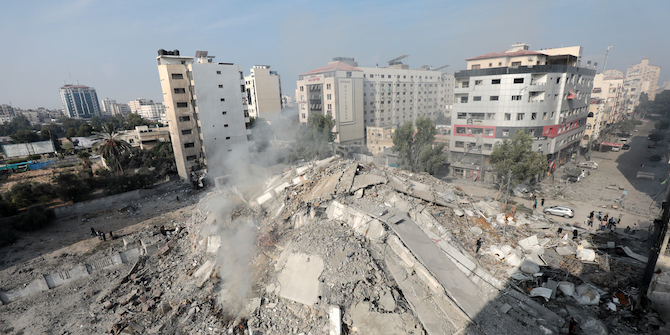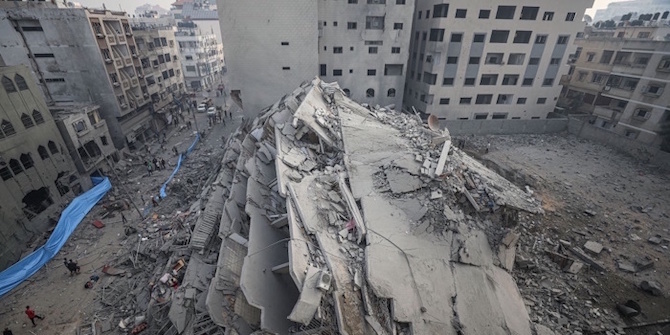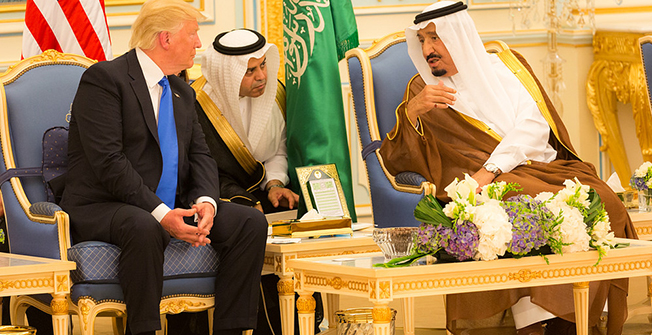by Alaa Tartir
This article was originally published in The Middle East in London magazine

Since May 2013, there has been intense debate about US Secretary of State John Kerry’s economic plan for the occupied Palestinian territories. The plan – known as the Palestine Economic Initiative (PEI) – aims to develop the economy of the West Bank and Gaza over the next three years, as a prerequisite for a political settlement to end the Palestinian-Israeli conflict. However, very few of those welcoming or criticizing the plan know anything concrete about it. Hence I call it the ‘invisible plan’. On a trip to the West Bank in December 2013, I met Palestinian and international officials and diplomats who are involved directly or indirectly in the PEI. Their message was that there will not be, as many expect, a third intifada (uprising), but something very different: an ‘investment intifada’.
The PEI is invisible not only because it was prepared by a team of ‘international experts’, but also because the Palestinian people, whose economic development is at stake, are the last to know about it. This is not new. Development planning since the establishment of the Palestinian Authority (PA) in 1993 has followed a non-participatory, top-down approach that conforms to the policy perceptions of the international financial institutions, and marginalizes the very people it is supposed to benefit. The invisibility of the plan is particularly problematic this time because the PEI promises an unattainable outcome (a 50% increase in Palestinian Gross Domestic Product (GDP) over three years, a cut of two-thirds in unemployment rates and a virtual doubling of the Palestinian median wage). The disappointment this is likely to generate could produce unpleasant consequences. Many ordinary citizens I met in the West Bank fear that the PEI could be the biggest sell-out since the Oslo accords of the 1990s.
As for the ‘investment intifada’, the interviews I conducted revealed how desperate local and international officials are to create tangible benefits on the ground. Over the next year and a half, officials expect that Palestinians in the West Bank and Gaza will ‘enjoy major economic benefits to facilitate and accelerate the political settlement’. The rationale is clear: offer the Palestinians better economic conditions, keep them quiet, and after three years they will make further political compromises. This approach has failed over the last two decades, but it seems no one is learning from past mistakes. However, major transformations have taken place since 2005 which will affect the peace-dividend rationale – namely, the security collaboration between the PA and Israel, and the PA’s increasing authoritarianism. The Palestinian security forces are now better prepared to protect any political agreement. However, authoritarianism and oppression will always be contested, as many young Palestinian activists affirmed in my conversations with them. They insist that a ‘peace dividend’ can’t buy freedom or justice.
The PEI will reportedly solicit around $4 billion in aid and investment, and allocate the money to such sectors as construction and housing, agriculture, tourism, information technology, building materials, power and energy, water, and light manufacturing. However, as a senior Palestinian official told me, ‘We expect the figure to reach $11 billion, instead of $4 billion. We are not asking for favours, we are offering our market, economic resources and cheap labour for international investment.’ Clearly, $11 billion of investment is a far cry from $4 billion. The absorptive capacity of the Palestinian economy would need to be changed dramatically before the injection of these sums. Otherwise, this will be a perfect recipe for yet more wasted billions that will entrench the complex network of corruption between Palestinians and Israelis, and the PEI ‘will be nothing but a palliative for a dangerous disease: the continuation of the occupation’, as a former Palestinian planning minister wrote recently in the New York Times.
Radical and innovative change will require a dramatic shift in the overall framework for aid and economic development. It also requires moving beyond the territorial classification of the Oslo accords (Areas A, B and C). Palestinians should not be pleading with the Israeli authorities to allow the donor community and international investors to invest in Area C, which comprises 61% of the West Bank. Instead their efforts should be geared towards resisting the territorial fragmentation that Oslo created and the Israeli military occupation has further entrenched. The need is to confront the occupying power rather than obligingly following its rules: to change not merely the rules of the game, but the game itself.
A new narrative is emerging which presents Kerry’s billions as an investment, not as aid. Those who have devised the PEI want to market it to governments, donors, multinational corporations, Israel and the public as an innovative plan. Indeed Tony Blair, the Quartet’s representative, stated naively that ‘this is the first time in history that such a fresh, comprehensive, innovative and broad approach has been taken’.
All this is problematic for several reasons. First, it is astonishing that the PA leadership are still dependent on the US and keen to maintain its exclusive sponsorship of the peace process. PA leaders even believe in the myth that the US is interested in pressuring Israel as a way to fulfil Palestinian demands. Second, the PA’s prioritization of the needs of the international community, as opposed to the needs of the Palestinian people, has not only eroded the PA’s legitimacy at home, but brought about the failure of the PA on all fronts. Twenty years on from the Oslo accords, it is failing to bring Palestinians closer to their national goals; in fact, just the opposite. Also, despite the $24.6 billion of international aid received over the last two decades, aid has not brought peace, development or security – let alone justice – for the Palestinian people.
Third, the PEI is not designed to address the imbalances of power between the colonizer and colonized, but instead relies on the goodwill and co-operation of Israel. Thus it is Israel that will decide whether or not to give the green light to the PEI. The historical evidence suggests it will ease some restrictions and allow additional major economic activities in the occupied territories, but will never jeopardize its ‘strategic goals’. What remains clear is that dependency on the colonial occupying power to develop an independent, viable, and prosperous Palestinian economy is surreal.
Finally, while the US dominates the peace industry and its economic dimension, the European Union (EU) is also keen to play a part. However, the EU’s potential contribution is fraught with contradictions. It has failed to become a major peace broker, despite the leverage of its aid to the Palestinians and its preferential trade relations with Israel. On one hand, it has issued guidelines banning funding for projects in Israeli settlements in the occupied territories, but on the other hand it has upgraded its trade relations with Israel. It announced recently that a generous aid package would be offered to both Palestinians and Israelis if they reach a peace agreement. It would also upgrade both parties to privileged-partner status. The sticks-and-carrots game played by the EU reinforces the conventional wisdom in the occupied territories that the ‘the US decides, the World Bank leads, the EU pays, the UN feeds’.
John Kerry has called his plan ‘a new model for development’. Tony Blair has claimed it is unique in history. However, I am afraid that the plan (and the whole development industry in the occupied territories) will remain like teenage sex – everybody claims they are doing it, but most people aren’t, and those that are, are doing it very badly.
As part of the Middle East Centre’s tenth anniversary celebrations in 2020, Alaa revisited this piece – read his reflections here.







2 Comments